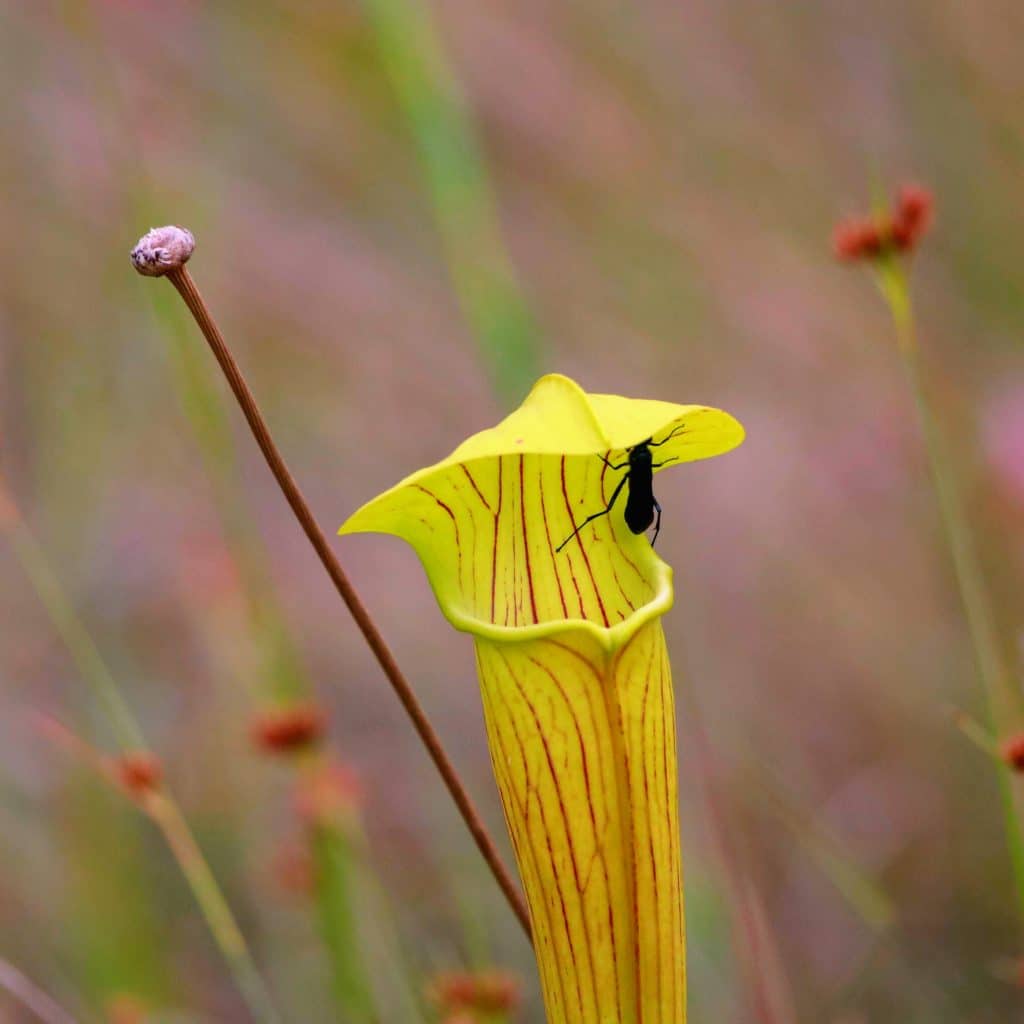Getting out and about in nature is a good idea anytime but is especially true as we deal with the current concerns about the coronavirus. If you can, head out to a local nature trail or open park and take in the sights and sounds of spring. In many ways, this is the best time of the year to work toward a healthy habit – for mind and body.
As for those “pesky” children who are stuck at home, I offer an opportunity to engage them in a healthy bit of scientific discovery and research on a kid-friendly subject – carnivorous plants. What kid wouldn’t find that interesting? Plants are supposed to make their own food, right? Well, these plants trap insects to supplement the meager levels of nutrients available to them in their habitat – wet pine savannas.
The two main nature trails at the Mississippi Sandhill Crane Refuge are open and both have plenty of great examples of carnivorous plants to see, many in their seasonal burst of flowering. The short video provides a virtual tour of a few of these, but there is nothing better than seeing them for yourselves. Get out and look for them at either the Fontainebleau Trail in Ocean Springs or the Dees Trail at the refuge headquarters in Gautier.
- Yellow-Top Pitcher plants are in full bloom – named for the yellow tops of the pitchers. The yellow flowers are called buttercups locally. Look for the Pitcher Plant Moths inside new pitchers (be gentle!). These insects are adapted to “live” in these plants.
- Parrots-Beak Pitcher plants are less common and will bloom soon (maroon blossom) – named for the “beak” shaped pitchers that lay across the ground – attracting ground insects.
- Dwarf Sundews – the dime to quarter-sized red plants that are covered with stiff, sticky-tipped hairs that act as botanical flypaper. Their white flowers make them easy to find this time of year.
- Thread-Leafed Sundews – round, light green, vertical leaves covered with sticky hairs, often with small insect victims. Their flowers are light pink.
- Butterworts – easily spotted by the bright yellow flowers on stalks above the light green basal leaves – that is greasy to the touch.
- Bladderworts – the only sign of these plants is the small yellow flowers on short stalks. The “bladders” are in the soil where they trap small soil insects.
If they take the time and do it carefully, kids could count the number of hapless insects stuck on the surface of a sundew or butterwort plant. Count the number of leaves per plant or count them on several plants and calculate an average. Then count the number of plants in a square foot. I know, I know, this is math, but hey … these kids can estimate the number of insects that either of these two species is eating. So, Johnny had an acre of sundews, each sundew caught …. you get the idea. Plenty of other topics to Google or report on as well: “My Trip to See Pitchers Plants”
And while you are out there, the native azaleas and wild huckleberries are also in full bloom. More tours to come!
Hope to see you in our great outdoors!
